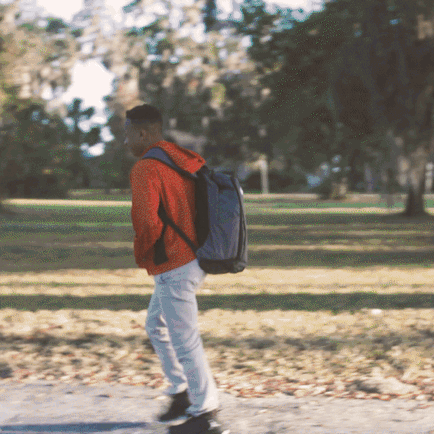
Recently, a former music teacher told me about a 1st grade student with Asperger’s syndrome who, on their first encounter, announced in no uncertain terms: “I hate music!” Over the next two years, the student used abusive language, had meltdowns, and was physically aggressive toward his peers. Finally, the teacher scheduled some individual time with him and discovered that he believed he was terrible at music and couldn’t sing. She let him play some of the instruments in her room and then showed him the music composition software program GarageBand on her Mac. It turned out that he was fascinated with computers and quickly figured out how to compose a song.
The next week, the teacher shared his song with the class and from that time on things began to change. He still struggled with his behavior, but over the next two years, she explained, “he played instruments in our concerts, joined the choir, had several solos, was in the musical. … [He] gave his heart and soul to music and continued to compose and mix music at home. He told his mother that whenever he was having a bad day, he would ‘go into his music’ and there he would find peace and calm.” This story illustrates how important it is to find out as much as possible about the strengths and abilities of students with special needs.
As a former special education teacher, I can’t count the number of times my students would come up to me and say, “Mr. A., when can I get out of this retarded class?” I began to understand that kids with special needs have two strikes against them. First, they have the disorder itself, and all the challenges it poses. But second, they have to spend a good deal of their time in school dealing with things they’re bad at. What we need to do is change this situation around so that right from the start, students with special needs are told about all the things they’re good at, and are engaged in activities that are based on those strengths.
Here are seven ways that you can activate the strengths of your students with special needs, whether you run a full-inclusion classroom, a self-contained special ed classroom, or anything in between:
• Discover your students’ strengths. Before they even come into your classroom, find out about your students’ strengths and abilities by talking with previous teachers and looking at cumulative files (focusing on the highest grades and test scores and any positive comments from teachers). Then, fill out a strength-based inventory for each student—and have parents fill one out as well. I have a 165-item strengths inventory in my book Neurodiversity in the Classroom, and there are others out there, too. Also, ask your special-needs students what they’re interested in, what they feel like they’re good at, and what they’d most like to study. If time is an issue, focus on the students who are the squeaky wheels and have the greatest needs.
• Provide positive role models with disabilities. Students with special needs need to learn about individuals with disabilities who have become successful in life. This way, they can hopefully come to the conclusion that “If they can do it, so can I!” Some examples of such individuals include: Noble Prize winning geneticist Carol Greider (learning disabilities), film director Steven Spielberg (ADHD), and animal scientist Temple Grandin (autistic spectrum disorder). Create a curriculum unit entitled, “People with Disabilities Who Changed the World,” and make sure that typically developing students also take part in the lessons.
• Develop strength-based learning strategies. Once you know your students’ special strengths, design strategies that utilize those abilities. If a student is great at drawing but has trouble reading, let her illustrate her vocabulary words. If a student shows gifts in knitting but doesn’t understand place value, have him design a fabric art piece by knitting rows of 10. There are thousands of ideas and projects that can be created by combining a student’s strengths with a learning deficit.
• Use assistive technologies and Universal Design for Learning tools. Learn about apps that capitalize on the gifts of your students with special needs. Provide a student who is a great orator but can’t write very well with a speech-to-text program such as Dragon Naturally Speaking, so that he can speak into the computer and produce writing that way. For a student with autism who loves to use an iPad but has difficulty communicating, teach her how to use an alternative augmentative communication app like Proloquo2Go, so that with the touch of a few buttons she can have a synthesized voice speak for her.
• Maximize the Power of your students’ social networks. So much of learning involves being in relationships with others, and many students with special needs have particular difficulty establishing positive social connections. Create a graphic representation of a student’s peer network, identifying both strong and weak relationships. Then, pair the student with classmates that he has the most positive relationships with using peer-teaching, cross-age tutoring, Best Buddies, or other social-learning approaches.
• Help students envision positive future careers. Most students with special needs have either no images of themselves as working adults in the future, or have primarily negative ones. Encourage these students by helping them make links between their strengths and the requirements of specific jobs or careers. So, for example, a student with ADHD who loves adrenaline-producing experiences might thrive in a high-stimulation job like firefighting. A student with learning disabilities who has a penchant for art might do very well working as a graphic artist.
• Create positive modifications in the learning environment. Think about how you can create changes in your classroom that dovetail with the particular strengths of your students with special needs. Provide a student with ADHD who learns best by moving, for example, with a stability ball that he can jiggle on while doing his classwork. For a student with Down Syndrome who loves to humorously mimic others, build a simple puppet theater where he can act out math word problems in front of the class and get positive feedback.
A movement is emerging in education called “neurodiversity,” which suggests that we view our students with special needs in terms of “diversity” rather than “disability.” By embracing this more positive perspective, and coupling it with differentiation strategies that build on students’ strengths, we can help ensure that our students with special needs achieve success both in the classroom and out in the real world.
Source: Education Week Teacher


